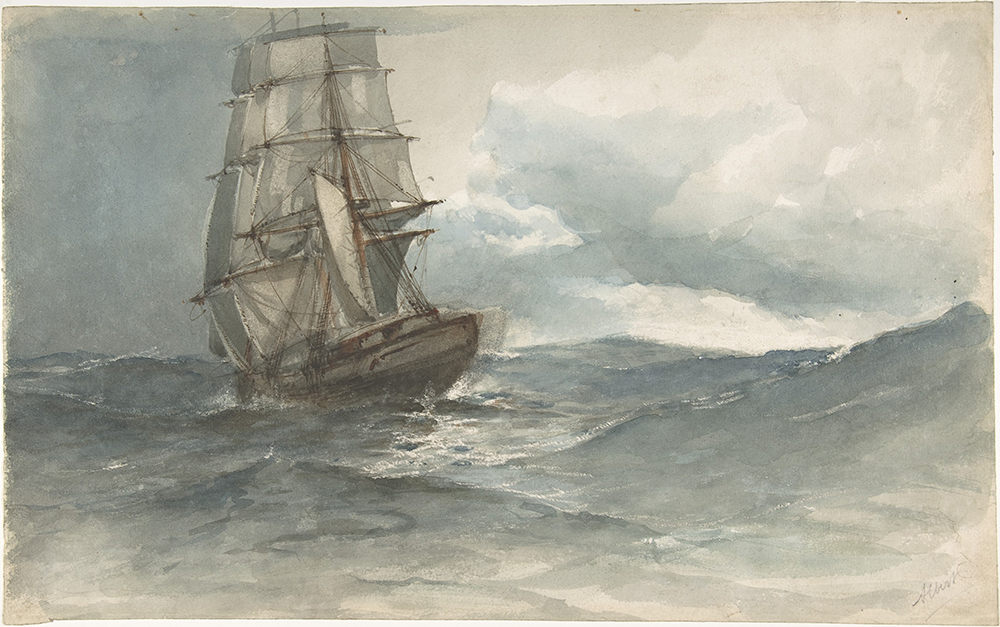Produced for K-12 educators, Teach This Poem features one poem a week from our online poetry collection, accompanied by interdisciplinary resources and activities designed to help teachers quickly and easily bring poetry into the classroom. The series is written by our Educator in Residence, Dr. Madeleine Fuchs Holzer, and is available for free via email.
Featured Poem
Ship at Sea

Ship at Sea by Albert Ernest Markes (1865-1901). Date: Late 19th century. Medium: Watercolor. Dimensions: 10 3/8 x 16 5/8 inches. Credit Line: Bequest of Susan Dwight Bliss, 1966. www.metmuseum.org.
Classroom Activities
- Whip around: Quickly ask each of your students to give a one or two word association they have with a ship on the sea. If a student wishes to pass, come back to them after all the other students have said something.
- Project the painting Ship at Sea and ask your students to look at it carefully. Ask them to write down what they notice about how the ship was painted—colors, brush strokes, etc. What is the impression they have of this ship on the sea? What is their evidence for this impression? (They should use what they noticed to help them provide this evidence.) Ask your students to turn and talk with a partner about what they saw and their impressions of the painting.
- Project the poem “There is no frigate like a book (1263)” by Emily Dickinson. First, ask your students to make a list of the vocabulary words they do not know in the poem. Help them discover the meaning of the words. Next, ask them to read the poem closely, writing down what jumps out at them in the poem. Ask a student to read the poem aloud to the class while the listening students to write down anything new that they hear. Repeat this process with another student reading aloud.
- Ask your students to gather in small groups to share what jumped out at them in the poem. They should discuss what they think the poem is saying about books and poetry.
- Whole-class discussion: How do your students feel when they are really engrossed in a book, story, or poem? To what is Emily Dickinson comparing this experience? What are the similes and the metaphors in this poem?
Other ideas for teaching this poem can be found in a lesson plan specifically designed for the National Poetry Month Poster.
